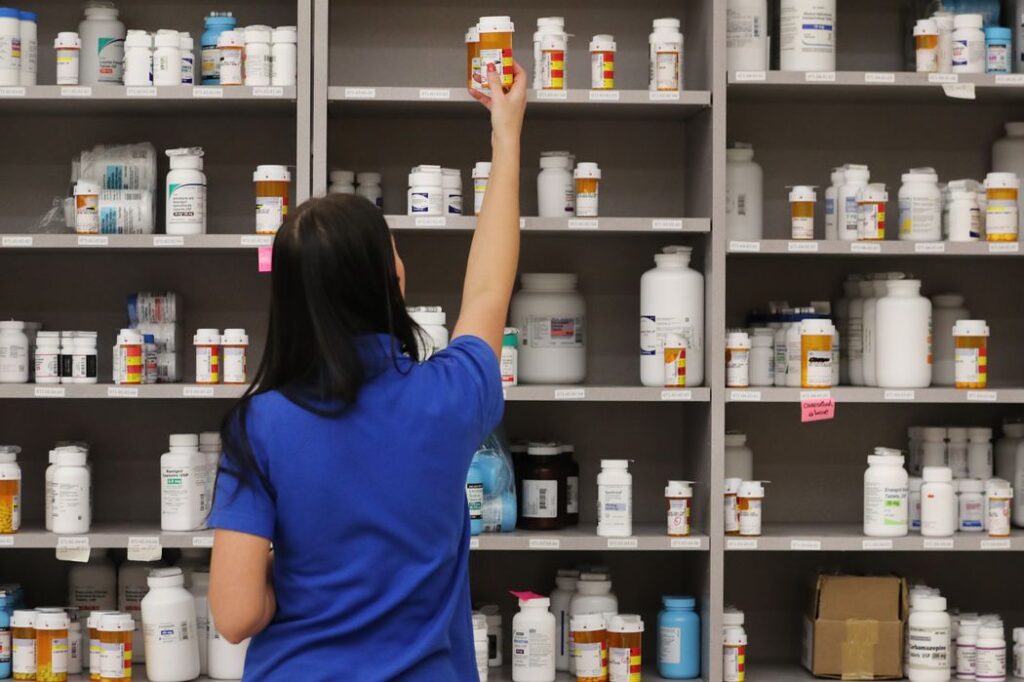Editor’s note: This post was first published by MarketWatch on September 16, 2021.
House Democrats recently voted to advance the $1 trillion infrastructure bill that passed the Senate last month, setting up a final vote by Sept. 27. The bill will pay for a lot of pavement, bridges and broadband services, but it will also leave a lot of chronically ill people by the side of the road.
What do sick people have to do with infrastructure? It’s called a tradeoff: a big chunk of the money needed for roads and bridges is being harvested from a suspended administrative rule that would have helped millions of Americans pay for critically needed medications. A once-in-a-generation chance to blunt rising drug costs for seniors is about to go down the tubes.
The rule would have reformed the Medicare Part D prescription drug program, specifically how it treats seniors who are prescribed branded drugs. Right now, after paying a $445 deductible, Medicare beneficiaries are billed 25% coinsurance until they pay $6,550 in total out-of-pocket spending. At that point they reach what is known as “catastrophic coverage,” where they pay 5% for the remainder of the year.
Sign up for Schaeffer Center news
The nasty wrinkle is that those percentages are based on drug company list prices – which keep rising. Yet net prices that drug companies receive after paying rebates to insurers and middlemen are falling. As a result, Part D beneficiaries in 2018 paid 64% of the actual cost in the initial coverage phase and 13% in the catastrophic phase.
Patients taking branded drugs where rebates tend to be largest face the highest costs, with no out-of-pocket maximum. For the sickest patients it can be a crushing burden. Overall, the financial protection offered by the Part D benefit has deteriorated for all beneficiaries in recent years.
The Department of Health and Human Services released a rule at the end of the Trump administration ending these rebates. The goal was to lower prices at the pharmacy counter by making the money that had been rebated to middlemen flow instead to patients.
But insurers use rebated funds to keep beneficiaries’ Part D insurance premiums in check. That in turn helps Medicare, which subsidizes the premiums. The Congressional Budget Office estimated that if the rebates to insurers and middlemen were eliminated, Medicare would have to pay an extra $177 billion over 10 years in subsidies.
When the Senate started work on the infrastructure bill, that $177 billion proved to be the rebate rule’s undoing. Even though the rule had not been implemented yet and no money set aside to cover the subsidies, the Senate “captured” the estimate as if it were real money that could be used to pay for infrastructure. Implementation of the rebate rule was postponed indefinitely, and in the world of congressional accounting, that enabled the infrastructure bill to get closer to being paid for.
The Senate passed the infrastructure bill 69-30. The remarkable display of bipartisanship was made possible by widespread support for restoring the basic facilities and services that help America function.
Similar bipartisan sentiment should exist for protecting sick seniors who face worsening financial conditions in trying to pay for their medicines. Congress should order that rebates be shared with Medicare beneficiaries at the pharmacy counter.
Not only would such a system help millions of beneficiaries, it would also slow the progression of all beneficiaries through the benefit phases and save taxpayers billions of dollars. From 2013 to 2017, spending in the catastrophic phase of Medicare Part D increased more than twice as fast as overall Medicare drug spending, reaching $59 billion in 2017, or about 40% of federal Part D spending. Basing beneficiary cost-sharing on net rather than list prices would result in about one-third fewer beneficiaries reaching catastrophic coverage, reducing federal spending in the catastrophic phase by about 19%.
The Medicare drug benefit was created 15 years ago to rescue the elderly from rapidly rising prices and ensure access to lifesaving medications. Like a road with traffic, it doesn’t function as well as it used to. Congress should come together to repair this indispensable safety net for America’s seniors.
Erin Trish and Dana P. Goldman are co-directors of the USC Schaeffer Center for Health Policy & Economics. Trish is a consultant to several healthcare and life sciences companies. Goldman is a scientific advisor and co-founder of several life sciences companies.



